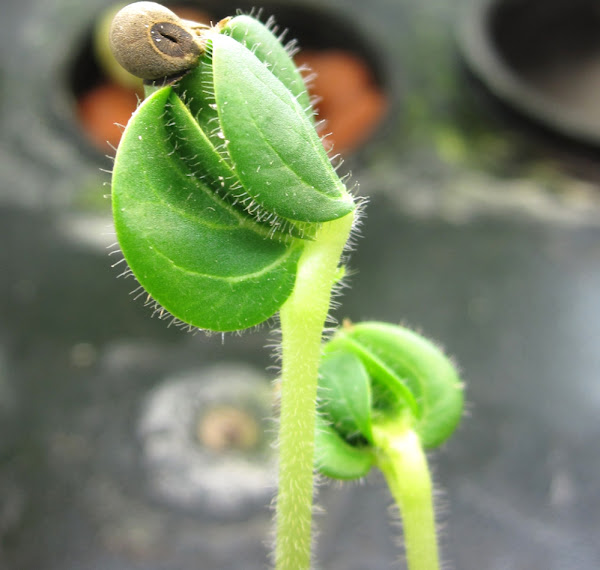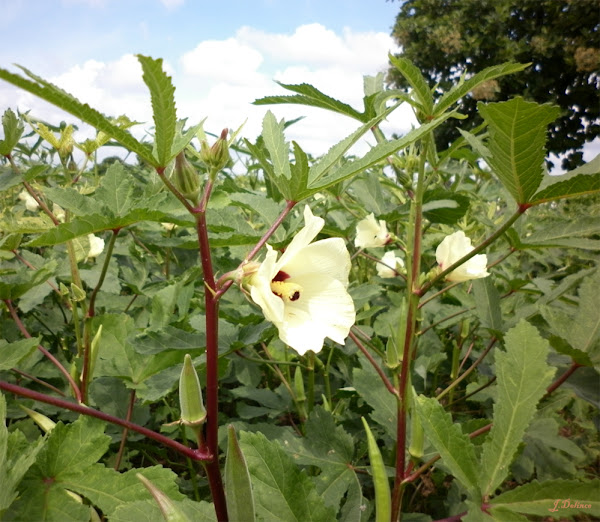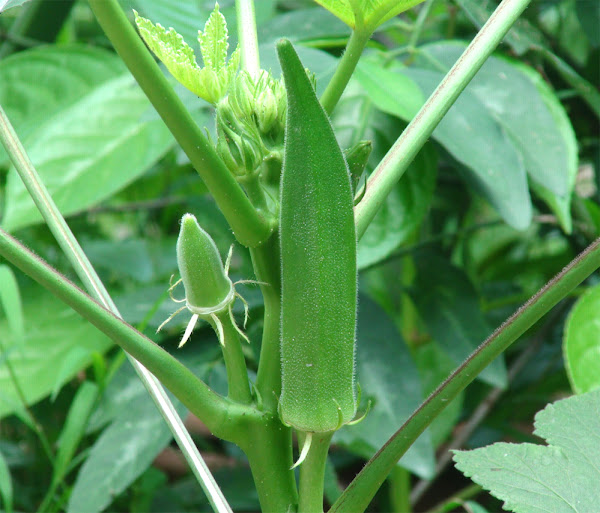Commercial okra farming is a very common and popular business in many countries around the world. And okra is among the most popular vegetables. Vegetable farming is very profitable as compared to other crop farming business. Commercial okra farming also like other vegetable farming, and it is very profitable. Okra is a flowering plant in the mallow family. It is also known by other different names such as ladies finger or ochro. It has edible green seed pods.
Okra plant is cultivated mainly in tropical, sub-tropical and warm temperate regions around the world and is a notable part of the cuisine of the Southern United States as well as Middle Eastern cuisine, Sri Lankan cuisine, Brazilian cuisine and Indian cuisine. Okra is a perennial, often cultivated as an annual in temperate climate. The plants often grow to around 2 meters tall. As a member of the Malvaceae, okra is related to such species as cocoa, cotton and hibiscus. Leaves of the okra plants are 4 to 8 inches long and broad, palmately lobed with 5 to 7 lobes.
The flowers are 4 to 8 cm in diameter, with 5 white to yellow petals, often with a red or purple spot at the base f each petal. The pollen are spherical and approximately 188 microns in diameter. And the fruits are a capsule up to 7 inches long with pentagonal cross-section, containing numerous seeds. Today, okra is available and grown in almost everywhere throughout the world. It is also a very popular vegetable in the United States.
Much of the supply of okra in the United States is grown in Florida, especially around Dade in Southern Florida. It is grown throughout Florida to some degree, so okra is available ten months of the year there.[1] However, commercial okra farming is a very good, easy and profitable business. You can start this business for making money.
Uses of Okra
Okra is mainly used and consumed as a vegetable. It is a very important part of the dishes in many countries. Raw okra is 90% water, 7% carbohydrates, 2% protein and negligible amount of fat. In a 100 gram reference amount, raw okra is a rich source of dietary fiber, vitamin C, and vitamin K, with moderate contents of thiamin, folate and magnesium.

Advantages of Okra Farming Business
Like many other vegetable or crop farming business, commercial okra farming business has numerous benefits or advantages. Commercial production of okra is very easy and anyone can do it with little experience. Commercial okra farming is much more profitable than traditional crop farming business. It can be a great income source for the people. However, here we are trying to describe the top advantages or benefits of okra farming business.
- Starting commercial okra farming is very easy and simple, even the beginners can start this business easily.
- You can make good profits from this business with little knowledge.
- Commercial okra farming is very profitable. So, it can be a good income source for the people.
- Commercial okra cultivation is already a very old and established business, and many people are already doing this.
- Growing okra plants is very easy, because these plants grow faster and require less caring and other management.
- You don’t have to worry much about starting and operating this business, because many people are already doing this business for making money.
- You can utilize your family labor by growing okra in small scale. And doing so will ensure additional income for your family.
- Both demand and value of okra are good in the market. So, profits from this business is very good.
- Production costs, labor costs and other management costs are relatively less in commercial okra farming business.
- Marketing okra is very easy, because it has very good demand and value.
- As commercial production of okra is very profitable, so it can be great employment source for the people. Especially for the educated but unemployed young people.
- Okra is very nutritious and consuming okra on a regular basis has numerous health benefits. You can enjoy fresh okra if you start your own okra farming business.
These are the top advantages of commercial okra farming business. You can enjoy all these benefits if you start your own okra farming business.
How to Start Okra Farming Business?
Starting commercial okra farming business is very easy and simple, and it is just like starting other vegetable farming business. You can easily start this business even if you are a beginner. Although, we recommend having practical experience/knowledge from existing farmers before starting commercial okra farming business. Here we are trying to describe more information about starting and operating a successful okra farming business from planting, caring to harvesting and marketing.
Site Selection
Commercial okra farming can be done in a wide range of soil types. But the ideal soil for okra cultivation is sandy loam to clay loam with rich organic matter and better drainage facility. Okra plants can also be grown in heavy soils if proper drainage system is available. Do not cultivate okra in alkaline and saline soils with poor drainage capacity soils. Ideal pH for growing okra should be between 6 and 6.5.
Land Preparation
Preparing the land perfectly before sowing seeds is a very important part of commercial okra farming business. Give 5-6 deep ploughings and leveling for preparing the soils. Apply well decomposed cow dung at the rate of 10 tonnes per acre during the time of last ploughing.
Climate Requirement For Okra Farming
Okra is a tropical plant requiring warm growing conditions. Night temperature should be above 15°C for good growth, and minimum soil temperature for seed germination is 17°C. Full sun is also a mandatory for commercial okra farming.
Choose a Variety
There are numerous varieties of okra available to choose from. You can choose any variety depending on it’s availability in your area. Consult with an expert in your area for having better recommendations.
Propagation
Propagation of okra is done through seeds.
Purchase Seeds
Okra seeds are highly available throughout the world. You will be able to purchase the seeds from any of your nearest seed supply stores. Today, many nurseries have online presence. So, you can also consider ordering the seeds online.
Planting/Sowing
Okra seeds are mainly sown prior to rainy season in most areas. The seeds are generally sown during June-July in rainy season, and in February to March for spring season.
Generally dibbling method is used for sowing okra seeds. Plant the seeds at 1-2 cm depth. Row to row spacing should be 45 cm, and plant to plant distance should be between 15 and 20 cm.
Caring
The okra plants are very strong and hardy, and they generally require less caring and other management. Although, taking additional caring will help the plants to grow well and produce more. Here we are tying to describe the common caring process of the okra plants.
Fertilizing: Apply as much organic fertilizers as you can while preparing the soil. Overall okra crop require Nitrogen at the rate of 36kg per acre in form of Urea at the rate of 80kg per acre. Apply half dose Nitrogen at time of sowing and remaining after first picking of fruits.
Irrigation: Pre sowing irrigation is a good option for better germination of the seeds. Because the seeds will germinate well if sufficient moisture is present in the soil. Apply next irrigation after seed germination. And then apply irrigation after 4 to 5 days in summer and 10 to 12 days in rainy season.
Controlling Weeds: Controlling weeds is very important for commercial okra farming business. Because, weeds consume most of the nutrients from the soil. So, regular weeding is done for controlling the growth of weeds in okra farming. Earthing up in the rows should be done in rainy season crop. First weeding is done 20-25 days after sowing the seeds, and second weeding is done after 40-45 days of sowing. Application of Fluchoralin 48% at the rate of 1 liter per acre or Pendimethalin at the rate of 1ltr per acre or Alachlor at the rate of 1.6Ltr per acre is used as pre-emergence herbicide for controlling weeds in okra is found an effective method.

Pests & Diseases
Like many other crops and vegetables, the okra plants are also prone to some common pests and diseases. Here we are trying to describe about the common diseases and pests of the okra plants and their treatment.
Cercospora Leaf Spot: Spots of grayish center and red borders are the common symptom of the cercospora leaf spot. Defoliation occurs if case of severe infestation. Seed treatment with Thiram is very effective for future infection. Take spray of Mancozeb at the rate of 4gm per liter or Captan at the rate of 2gm per liter or Carbendazime at the rate of 2gm per liter of water if infestation of this disease is observed in the field.
Powdery Mildew: White powdery growth on young leaves is the common symptom of this disease. To control this disease, spray Wet table Sulphur 25gm per 10Ltr of water or Dinocap at the rate of 5ml per 10Ltr of water, 4times at 10 days interval or Tridemorph at the rate of 5ml or Penconazol at the rate of 10ml per 10Ltr of water for 4 times with 10 days interval.
Root Rot: Root rot is also a common disease of the okra plants. The infested roots become dark brown in color and the plant die in case of severe infestation. Do seed treatment before sowing the seeds and try to follow crop rotation for preventing this disease. Drenching the soil with Carbendazim solution at the rate of 1 gram per liter of water will also be effective for preventing this disease.
Wilt: Older leaves turn yellow initially in wilt disease followed by complete wilting of crop. It can actually attack crop at any stage. Drench with Carbendazim at the rate of 10 gram per 10 liter water around root zone, if you observe the infestation of wilt.
Yellow Vein Mosaic Virus: The characteristic symptom of this disease is homogenous interwoven network of yellow veins. Use resistant varieties for cultivation. Remove and destroyed diseased plants away from field. To control white fly take spray of Dimethoate at the rate of 300ml per 200Ltr of water.
Aphid: Colony of aphids on young leaves and fruits can be seen. Both adult and nymphs suck the sap and thus they weaken the plant. Destroy the affected parts of the plants as soon as infestation is noticed. Then apply Dimethoate 300 ml per 150Ltr of water, 20 to 35 days after sowing. Repeat again if necessary. If infestation is observed, take spray of Thiamethoxam 25WG at the rate of 5gm per 15Ltr of water.
Blister Beetle: Blister beetle feed on pollen, petals and flower buds. Collect and destroy adults if you observe the infestation. Then take spray of Carbaryl at the rate of 800gm per 150 liter of water or Malathion at the rate of 400ml per 150 liter of water or Cypermethrin at the rate of 80ml per 150 liter of water.
Shoot & Fruit Borer: Shoot and fruit borer larvae bore into the shoots during vegetative growth, resulting in drooping of affected shoots. Destroy the infested parts of the plants for preventing these pests. Spray Spinosad at the rate of 1ml per liter of water if pest population is high or Chlorantraniliprole 18.5%SC at the rate of 7ml per 15 liter of water or Flubendiamide at the rate of 50ml per acre added in 200 liter water.
Harvesting
The fruits become ready for harvesting 60 to 70 days after sowing the seeds. Try to harvest only the small and tender fruits, because the mature fruits are not edible. Try to harvest the fruits in the morning and evening. Don’t delay to harvest the fruits, because delay in harvesting the fruits may make the fruits fibrous and they lose their tenderness and taste. Okra has short shelf life and can not be stored for longer time. Fill the fruits in jute bags for sending them in the local market.

Yield
It’s not possible to tell the exact amount, because it depends on numerous factors. Generally, rainy season crop gives 12 to 15 tonnes per hectare, and summer crop gives 8 to 10 tonnes per hectare.
Marketing
Marketing okra is very easy and simple. You can easily sell your products in the local market. Although, you should set a good marketing strategies before starting this business. Because, you will not be able to make good profits if you can’t sell your products easily at good prices.
These are the common steps and ways for starting and operating a successful okra farming business. Hope this guide has helped you! Good luck and may God bless you!







What’s is the estimated yield per acre?
Phone number is +2332460116789
The estimated yield of okra per acre can vary depending on various factors such as climate, soil type, farming practices, and variety of okra. However, according to some agricultural sources, the average yield of okra per acre can range from 7,000 to 12,000 pounds (3,175 to 5,443 kg) of pods. This estimate assumes the use of proper farming techniques and management practices to maximize crop yield. It’s worth noting that with the use of modern technology and improved farming practices, the yield can be significantly higher.